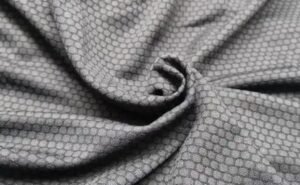As the founder of Natural Touch Clothing, a high-end clothing manufacturer in China, I’ve had my fair share of experiences when it comes to promoting a clothing brand. With a strong focus on B2B wholesale and custom clothing, we’ve successfully expanded our reach to Europe, the USA, and Australia. In this blog post, I’ll share some valuable insights and strategies on how to effectively promote your clothing brand.

Crafting Your Brand Identity
Before diving into the world of promotions, it’s essential to establish a strong brand identity. Your brand identity is the essence of your business, and it’s what sets you apart from the competition. Here’s how I did it for Natural Touch Clothing:
1. Name and Website
First things first, your brand name should be catchy, memorable, and relevant to your niche. In my case, “Natural Touch Clothing” reflects our commitment to quality and sustainability. Ensure that your website, like mine (lovenaturaltouch.com), is user-friendly, visually appealing, and easy to navigate.
2. Product Range
Diversify your product range to cater to a broader audience. Natural Touch Clothing offers everything from dresses and skirts to pajamas and jackets. A wide variety of products not only attracts different customer segments but also keeps your brand dynamic.
3. Business Model
Consider your business model carefully. We primarily focus on B2B sales, wholesale, and custom orders, which has allowed us to establish strong relationships with large companies and distributors. Find the model that suits your brand best.
4. Quality and Customization
Quality is non-negotiable in the clothing industry. Emphasize high-quality materials, craftsmanship, and attention to detail. Additionally, offering customization options, both OEM (Original Equipment Manufacturer) and ODM (Original Design Manufacturer), can set you apart from competitors.
Identifying Your Target Audience
Knowing your target audience is fundamental to any successful marketing strategy. At Natural Touch Clothing, our main customer identities include procurement officers from large companies, clothing buyers, and clothing distributors. Here’s how you can identify your target audience:
1. Market Research
Conduct thorough market research to understand your potential customers’ preferences, behavior, and pain points. This information will help you tailor your promotional efforts to resonate with them.
2. Customer Personas
Create customer personas based on your research. These fictional characters represent different segments of your target audience. Knowing your personas inside out makes it easier to create relevant content and campaigns.
3. Competitive Analysis
Analyze your competitors to identify gaps in the market. What can you offer that they don’t? Finding your unique selling points is crucial for effective promotion.
Leveraging Promotion Channels
Now that you’ve defined your brand identity and target audience, it’s time to explore various promotion channels. Here are some strategies that have worked well for Natural Touch Clothing:
1. Online Marketplaces
Online marketplaces like Alibaba can be incredibly beneficial, especially if you’re looking to expand internationally. These platforms connect you with potential customers and partners worldwide.
2. Trade Shows
Participating in trade shows provides a valuable opportunity to showcase your clothing brand and network with industry professionals. It’s a chance to meet potential clients face-to-face and make lasting impressions.
3. Company Website
Your website is your online storefront, so make it count. Ensure it’s not only visually appealing but also optimized for search engines (SEO). Regularly update it with new products, blog posts, and customer testimonials to keep it fresh and engaging.
Creating Engaging Content
Content is king when it comes to promoting your clothing brand. Quality content helps establish your brand as an authority in the industry and builds trust with your audience. Here are some content ideas:
1. Blogging
Maintain a blog on your website where you can share fashion tips, industry insights, and updates about your brand. Blogging helps with SEO and positions your brand as a source of valuable information.
2. Social Media
Utilize platforms like Instagram, Facebook, and Pinterest to showcase your clothing items through high-quality images and engaging posts. Social media is an excellent way to connect with your audience and promote your brand’s lifestyle.
3. Email Marketing
Build and maintain an email list to keep your customers informed about new arrivals, promotions, and special events. Personalize your emails to cater to different customer segments.
4. Influencer Collaborations
Partnering with fashion influencers can help you reach a broader audience. Choose influencers whose style aligns with your brand’s image and values.
Embracing Sustainability
Sustainability is a growing concern for consumers worldwide, and it can be a powerful selling point for your clothing brand. Here’s how you can incorporate sustainability into your brand and promotional efforts:
1. Eco-Friendly Materials
Use sustainable materials like organic cotton, bamboo, or recycled fabrics in your clothing production. Highlight your commitment to eco-friendliness in your marketing materials.
2. Ethical Manufacturing
Ensure your manufacturing processes adhere to ethical standards. Transparency about your supply chain and production methods can build trust with environmentally conscious consumers.
3. Green Packaging
Consider eco-friendly packaging options to minimize your brand’s environmental impact. This can also be a unique selling point.
Nurturing Customer Relationships
Building lasting relationships with your customers is essential for brand loyalty and repeat business. Here’s how I’ve focused on customer relationships at Natural Touch Clothing:
1. Exceptional Customer Service
Provide excellent customer service, including fast response times and helpful, personalized assistance. Happy customers are more likely to become loyal advocates for your brand.
2. Loyalty Programs
Implement loyalty programs to reward repeat customers. Discounts, exclusive access, or early product releases can incentivize customer loyalty.
3. Feedback and Reviews
Encourage customers to leave reviews and provide feedback. Positive reviews serve as social proof and can influence potential buyers.
Measuring and Adapting
Lastly, never underestimate the importance of data and analytics in your promotional efforts. Use tools like Google Analytics and social media insights to track the performance of your marketing campaigns. Regularly assess what’s working and what’s not, and be willing to adapt your strategies accordingly.
In conclusion, promoting your clothing brand is an ongoing process that requires a deep understanding of your brand identity, target audience, and the ever-evolving fashion industry. By crafting a strong brand, identifying your audience, leveraging various promotion channels, creating engaging content, embracing sustainability, nurturing customer relationships, and measuring your efforts, you can build a successful clothing brand that stands the test of time.
Remember, there’s no one-size-fits-all approach to promotion, so be open to experimentation and stay attuned to market trends. With dedication, creativity, and a passion for fashion, you can take your clothing brand to new heights.







